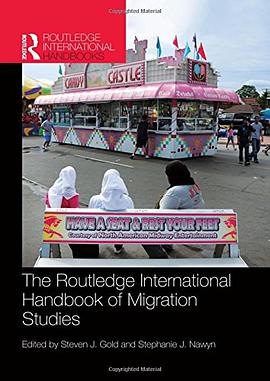Routledge International Handbook of Migration Studies
豆瓣
Gold, Steven J.; Nawyn, Stephanie J.;
简介
The current era is marked by an unparalleled level of human migration, the consequence of both recent and long-term political, economic, cultural, social, demographic and technological developments. Despite increased efforts to limit its size and consequences, migration has wide-ranging impacts upon social, environmental, economic, political, and cultural life in countries of origin and settlement. Such transformations impact not only those who are migrating, but those who are left behind, as well as those who live in the areas where migrants settle. The Handbook of Migration Studies offers a conceptual approach to the study of international migration, exploring clearly the many modes of exit, reception and incorporation which involve varied populations in disparate political, economic, social and cultural contexts. How do these movements also facilitate the transmission of ideologies and identities, political and cultural practices and economic resources? Uniquely among texts in the subject area, the Handbook also provides a section devoted to exploring methods for studying international migration. Featuring forty-seven essays written by leading international and multidisciplinary scholars, the Routledge International Handbook of Migration Studies offers a contemporary, integrated and comprehensive resource for students and scholars of sociology, politics, human geography, law, history, urban planning, journalism, and health care.
contents
List of figures
List of tables
Notes on the contributors
Introduction to the second edition
Introduction to the first edition
PART I: Theories and histories of international migration
1 Economic perspectives on migration
2 Psychological acculturation: perspectives, principles, processes, and prospects
3 European migration history
4 Migration history in the Americas
5 Asian migration in the longue durée
6 A brief history of African migration
PART II Displacement, refugees and forced migration
7 Forced migrants: exclusion, incorporation and a moral economy of deservingness
8 Refugees and geopolitical conflicts
9 Country of first asylum
10 Displacement, refugees, and forced migration in the MENA region: the case of Syria
11 Climate change and human migration: constructed vulnerability, uneven flows, and the challenges of studying environmental migration in the 21st century
PART III: Migrants in the economy
12 Unions and immigrants
13 Immigrant and ethnic entrepreneurship
14 High-skilled migration
15 Immigration and the informal economy
16 Vulnerability to exploitation and human trafficking: a multi-scale review of risk
PART IV: Intersecting inequalities in the lives of migrants
17 The changing configuration of migration and race
18 Nativism: a global-historical perspective
19 Gender and migration: uneven integration
20 Sexualities and international migration
21 Migrants and indigeneity: nationalism, nativism and the politics of place
PART V: Creating and recreating community and group identity
22 Panethnicity
23 Understanding ethnicity from a community perspective
24 Religion on the move: the place of religion in different stages of the migration experience
25 Condemned to a protracted limbo? Refugees and statelessness in the age of terrorism
26 Reclaiming the black and Asian journeys: a comparative perspective on culture, class, and immigration
PART VI: Migrants and social reproduction
27 Immigrant and refugee language policies, programs, and practices in an era of change: promises, contradictions, and possibilities
28 Immigrant intermarriage
29 International adoption
PART VII: Migrants and the state
30 Undocumented (or unauthorized) immigration
31 Detention and deportation
32 Naturalization and nationality: community, nation-state and global explanations
33 Asian migrations and the evolving notions of national community
34 Immigration and education
35 Emigration and the sending state
36 International migration and the welfare state: connections and extensions
37 Immigration and crime and the criminalization of immigration
PART VIII: Maintaining links across borders
38 The historical, cultural, social, and political backgrounds of ethno-national diasporas
39 Transnationalism
40 Survival or incorporation? Immigrant (re)integration after deportation
41 Return migration
PART IX: Methods for studying international migration
42 Census analysis
43 Binational migration surveys: representativeness, standardization, and the ethnosurvey model